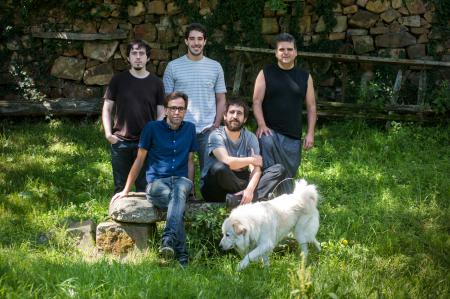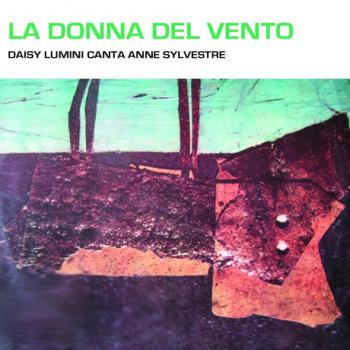Where Have all the Flowers Gone

LOREAK NON DIRA?
(Continues)
(Continues)
Contributed by CCG/AWS Staff 2016/3/28 - 22:54
Éléonore
La versione italiana di Daisy Lumini, da “La donna del vento - Daisy Lumini canta Anne Sylvestre”, 1972.

ELEONORA
(Continues)
(Continues)
Contributed by Bernart Bartleby 2016/3/28 - 21:48
Il testamento del parroco Meslier

à partir de la
Version française – LE TESTAMENT DU CURÉ MESLIER – Marco Valdo M.I. – 2008
Chanson italienne – Il testamento del parocco Meslier – Anton Virgilio Savona – 1972
nouvelle version française – 28 mars 2016.
Ah, Lucien l’âne mon ami, en ces temps troubles, je suis allé au spectacle pas plus tard qu’hier à Bruxelles pour écouter la bonne parole du curé Meslier. On n’était pas vraiment très nombreux, car la salle était petite et puis, on n’aurait pas mis grand monde non plus dans l’église de Jean Meslier à Étrépigny.
Que voilà une bonne idée d’aller écouter la bonne parole d’un si bon curé, dit Lucien Lane en riant.
En effet, tu ne pourrais mieux dire, car c’était un excellent sermon, un très remarquable prône dans lequel notre curé athée s’en prend directement à toutes les religions – je dis bien à toutes les religions, y compris in primis les monothéismes, les religions... (Continues)
Version française – LE TESTAMENT DU CURÉ MESLIER – Marco Valdo M.I. – 2008
Chanson italienne – Il testamento del parocco Meslier – Anton Virgilio Savona – 1972
nouvelle version française – 28 mars 2016.
Ah, Lucien l’âne mon ami, en ces temps troubles, je suis allé au spectacle pas plus tard qu’hier à Bruxelles pour écouter la bonne parole du curé Meslier. On n’était pas vraiment très nombreux, car la salle était petite et puis, on n’aurait pas mis grand monde non plus dans l’église de Jean Meslier à Étrépigny.
Que voilà une bonne idée d’aller écouter la bonne parole d’un si bon curé, dit Lucien Lane en riant.
En effet, tu ne pourrais mieux dire, car c’était un excellent sermon, un très remarquable prône dans lequel notre curé athée s’en prend directement à toutes les religions – je dis bien à toutes les religions, y compris in primis les monothéismes, les religions... (Continues)
LE TESTAMENT DU CURÉ MESLIER
(Continues)
(Continues)
Contributed by Marco Valdo M.I. 2016/3/28 - 15:12
Dżem: Obłuda

Pasqua 28 marzo 2016
IPOCRISIA
(Continues)
(Continues)
Contributed by Krzysiek Wrona 2016/3/28 - 02:50
Uspavanka (Nini sine, spavaj sine)

Mušan "Caco" Topalović era un piccolo gangster di Sarajevo. Si fece una piccola brigata di gente come lui, rifiutando di sottostare al comando dell’armata bosgnacca. Il suo gruppo si macchiò di ogni genere di efferatezze e brutalità e quando i suoi cercarono di fermarlo lui uccise anche i poliziotti che dovevano trarlo in arresto. Poi si arrese e fu trucidato sul posto da altri poliziotti, tra cui c’erano familiari degli assassinati, bosgnacchi come lui...
Ho riletto l’intervista ad Ontanetti a commento del link da te citato sulla morte di Locatelli e non ho potuto fare a meno di pensare che fu un gravissima imprudenza da parte dei “Beati” consegnare il proprio destino nelle mani di uomini come Caco e i suoi... E Locatelli e i suoi compagni sapevano benissimo di cosa quei bastardi fossero capaci...
Qui c’è un interessante articolo sui signori della guerra nella ex Jugoslavia e sul loro... (Continues)
Ho riletto l’intervista ad Ontanetti a commento del link da te citato sulla morte di Locatelli e non ho potuto fare a meno di pensare che fu un gravissima imprudenza da parte dei “Beati” consegnare il proprio destino nelle mani di uomini come Caco e i suoi... E Locatelli e i suoi compagni sapevano benissimo di cosa quei bastardi fossero capaci...
Qui c’è un interessante articolo sui signori della guerra nella ex Jugoslavia e sul loro... (Continues)
Bernart Bartleby 2016/3/27 - 22:42
Where Have all the Flowers Gone

SERBO / SERBIAN / SERBE
La versione serba è sostanzialmente la versione croata 3 adattata alle caratteristiche fonetiche del dialetto ekavo (il dialetto sul quale si basa la lingua letteraria serba) e riportata in alfabeto cirillico. Abbiamo scelto per questa “operazione” la versione croata 3 in quanto sicuramente la più corretta e vicina all'originale.
The Serbian version is practically the Croatian version 3 which has been adapted to the phonetic characteristics of the Ekavian dialect (the dialect the literary Serbian languages is based upon) and transcribed into Cyrillic characters. We chose for this “operation” the Croatian version 3 as it is no doubt the one most correct and closest to the original. [CCG/AWS Staff]
The Serbian version is practically the Croatian version 3 which has been adapted to the phonetic characteristics of the Ekavian dialect (the dialect the literary Serbian languages is based upon) and transcribed into Cyrillic characters. We chose for this “operation” the Croatian version 3 as it is no doubt the one most correct and closest to the original. [CCG/AWS Staff]
КУД' ЈЕ ЦВЕЋЕ НЕСТАЛО
(Continues)
(Continues)
Contributed by CCG/AWS Staff 2016/3/27 - 22:16
Where Have all the Flowers Gone
PERSIANO (FÂRSI) / PERSIAN (FÂRSI) / PERSAN (FÂRSI)
La traduzione persiana è ripresa dalla pagina di fa.wikipedia. E' riportata in “forma schematica” per evitare le ripetizioni, una pratica generalmente aborrita in questo sito; ma in questo caso la manteniamo per le oggettive difficoltà di lettura.
The Persian (Fârsi) translation is reproduced from the relevant page of fa.wikipedia. It is reproduced in a “schematic” (abridged) form to avoid repetitions, something we don't really like in this site; but we kept this format due to objective reading difficulties. [CCG/AWS Staff]
The Persian (Fârsi) translation is reproduced from the relevant page of fa.wikipedia. It is reproduced in a “schematic” (abridged) form to avoid repetitions, something we don't really like in this site; but we kept this format due to objective reading difficulties. [CCG/AWS Staff]
اون همه گل کجا رفتند؟
(Continues)
(Continues)
Contributed by CCG/AWS Staff 2016/3/27 - 21:49
Where Have all the Flowers Gone

DANESE / DANISH / DANOIS
La seguente versione danese appare dichiaratamente come una traduzione della versione russa di Oleg Nesterov, ma è comunque aderente alle linee base del testo. E' stata reperita da una pagina danese di Life Schools contenente un articolo intitolato Da Mikhail Sholokhov inspireret Pete Seeger til at skabe sange? (“Quando Mihajl Šolohov ha ispirato Pete Seeger a comporre canzoni?”) che contiene una storia della canzone che sembra palesemente la traduzione dell'introduzione alla pagina di questo sito.
The following Danish version is clearly declared as a translation of Oleg Nesterov's Russian version, but it is nevertheless close to the basic English lyrics. It is reproduced from a Danis Life Schools page including an article named Da Mikhail Sholokhov inspireret Pete Seeger til at skabe sange? (When did Michail Sholohov inspire Pete Seeger to compose songs?), including a history of the song apparently very close to the introduction to this site page. [CCG/AWS Staff]
La seguente versione danese appare dichiaratamente come una traduzione della versione russa di Oleg Nesterov, ma è comunque aderente alle linee base del testo. E' stata reperita da una pagina danese di Life Schools contenente un articolo intitolato Da Mikhail Sholokhov inspireret Pete Seeger til at skabe sange? (“Quando Mihajl Šolohov ha ispirato Pete Seeger a comporre canzoni?”) che contiene una storia della canzone che sembra palesemente la traduzione dell'introduzione alla pagina di questo sito.
The following Danish version is clearly declared as a translation of Oleg Nesterov's Russian version, but it is nevertheless close to the basic English lyrics. It is reproduced from a Danis Life Schools page including an article named Da Mikhail Sholokhov inspireret Pete Seeger til at skabe sange? (When did Michail Sholohov inspire Pete Seeger to compose songs?), including a history of the song apparently very close to the introduction to this site page. [CCG/AWS Staff]
HVOR ER BLOMSTERNE?
(Continues)
(Continues)
Contributed by CCG/AWS Staff 2016/3/27 - 20:13
×
![]()

![Песня о звездах [ Звёзды ]](img/upl/zimna.jpg)


Lou Toupet & Harkaitz Cano
La versione basca del gruppo Lou Topet assieme a Harkaitz Cano (composta nel 2012, pubblicata in singolo nel 2015)
Basque (Euskara) version by the band Lou Topet together with Harkaitz Cano (written 2012, single release 2015)
Version basque (Euskara) de Lou Topet avec Harkaitz Cano (composée en 2012, enregistrée en 2015)